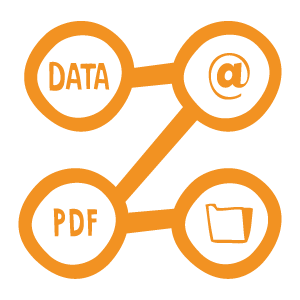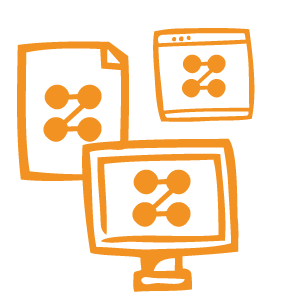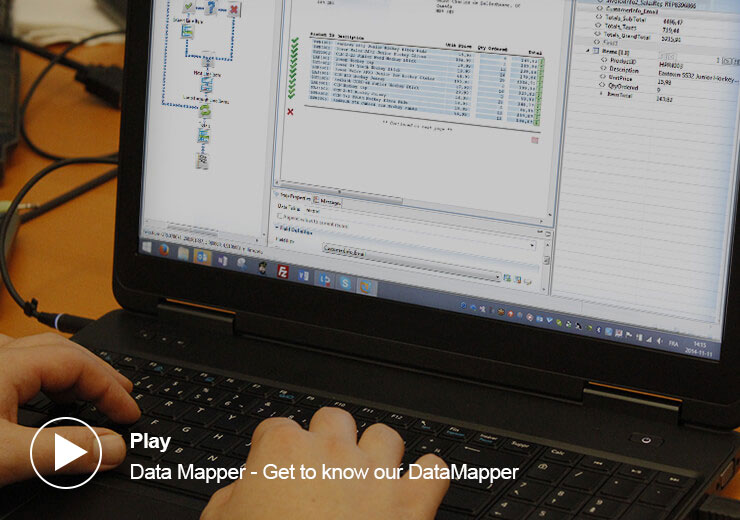 |
1 – Map data from various sourcesPlanetPress Connect can capture and read data in pretty much any format. ASCII, print streams, hot folders, emails, HTTP requests, PDFs or database exports. Wherever your data is located, you can use the DataMapper to retrieve and store as a Unified Data Model. |
 |
2 – Generate a Unified data Model for the design phaseOnce created, the Unified Data Model allows for the easy creation of print documents, emails or web pages. Even if the data comes from different systems, they look like they’re all coming from the same place, making it that much simpler for the person responsible for the design to do his/her job. |
 |
3 – Use the same Unified Data Model in multiple designsOnce they’re created, Unified Data Models can be used for the composition of any PlanetPress documents or variations of the same document. A Unified Data Model acts as a data source. So for instance, let’s say you changed a variable like quantity in a HTML invoice, the email within which it’s embedded is then automatically updated with the new information. |
Data mapping features
| Standard | Optional | |
| Simplified data mapping wizard for Database, CSV and Excel | – | |
| Text data mapping | – | |
| XML data mapping | – | |
| PDF data mapping (including PDF/VT structure) | – | |
| PCL data mapping | – |
